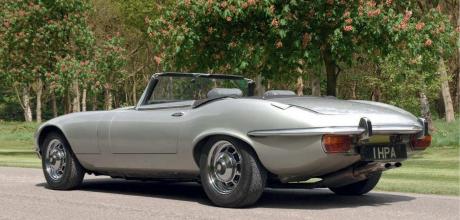Five-speed manual prototype 1971 Jaguar E-Type V12 Roadster Series 3
Jaguar’s foray into five-speed gearbox manufacture revealed through a rare prototype escapee.
HIGH FIVE
Jim Patten explores the story of an escaped prototype
WORDS & PHOTOGRAPHY: JIM PATTEN
It took Jaguar some years to perfect a five-speed gearbox installation. There was the cumbersome ZF manufactured unit as fitted to the low run lightweight E-types, before they adopted the Rover derived LT77 unit for the Series 3 XJ6, and subsequently harnessed the Getrag for the 3.6 XJ-S. Way back in the seventies though, Jaguar came very close to manufacturing their very own. A few prototype examples made their way into road going versions — one was fitted to a customer Series 3 E-type, that has a back story so fascinating, that the story almost masks the Jaguar development story. It all began during World War 2.
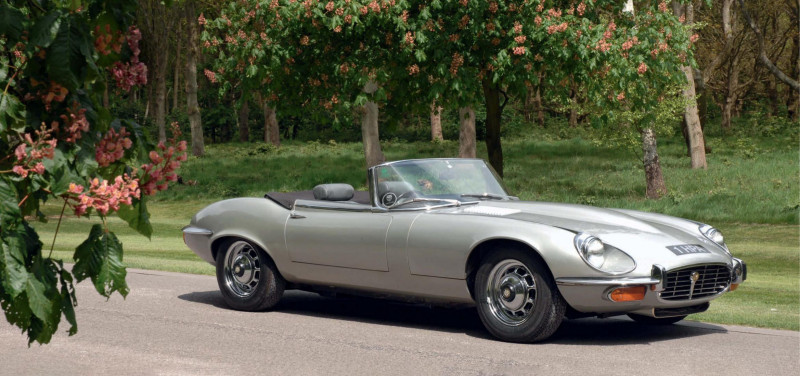
It was an audacious attempt. Five prisoners of war in Oflag V11B variously dressed as a Nazi officer, his adjutant, batman and Red Cross officials calmly walked up to the prison gates where the disguised officer demanded “Schnell – machen sie das tur auf!” – literally Hurry up and get this gate open. Incredibly the gate was opened and the prisoners strode to freedom. Short lived as it transpired as without waiting transport, their actions of striding off to the nearby forest outside of the gates caused some suspicion and within half an hour, they were recaptured.
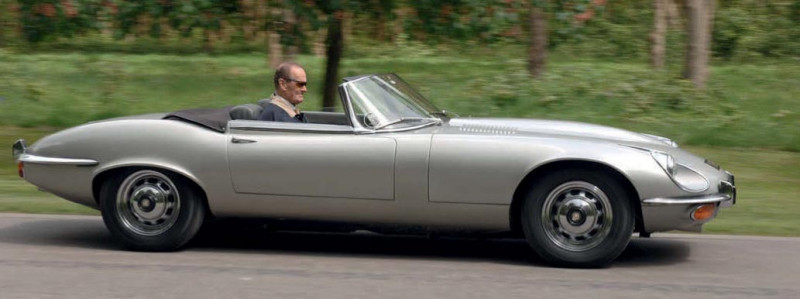
Posing as the officer was Major William ‘Tubby’ Broomhall (latterly Major-Genral, CB, DSO, OBE) and his disguise was made from Red Cross blankets, stiff cardboard with the Iron Cross and other medals fabricated from silver paper. Mind you Tubby did have expert help as his Saville Row tailor just happened to be a prisoner as well. Tubby escaped the firing squad when he declared that he was not impersonating a German officer but was in fancy dress. His punishment was to be transferred to Colditz where he befriended Captain Tony Rolt and became embroiled in many escape attempts. Rolt’s story is too long to feature here but he was the idea behind the fabled glider escape attempt at Colditz, immortalised in film. His racing career, which began pre-war continued post war, led to his competing in every Le Mans from 1949 until 1955, winning in 1953 when he shared the works C-type with Duncan Hamilton. There was also a shot at Formula 1.
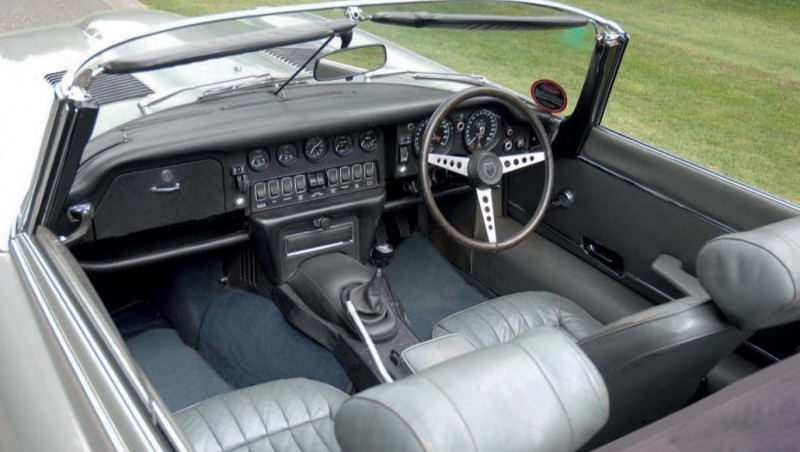
THE JAGUAR CONNECTION
Post war the friendship continued and through Rolt’s connections at Jaguar, he introduced Broomhall to F.R.W ‘Lofty’ England. The pair got along fabulously and another friendship was forged, and after buying an XK, the Major-General always bought Jaguar. ‘Tubby’ was particularly charmed by the new V12 engine fitted to an enlarged version of the E-type, prior to finding its way into the XJ saloon. Announced as the Series 3, one of the first examples (1S1007, registered LA 2) was allocated to Broomhall and delivered on 27 August 1971. From the outset, it was clear that the Major intend to do some serious touring — he’d already covered vast mileages in his 3.8 E-type. The history file shows enquiries to Zenith in the month of delivery asking about European carburettor stockists. He did the same to Lucas in September.
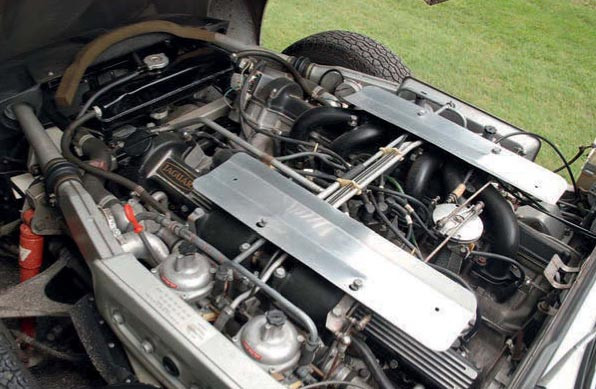
In December, he quizzed Keinzle about the time regulation of the clock. Obviously, the Major-General applied the same level of thoroughness to his car as he did in his military career. In 1973 while meeting with Lofty England at the factory, the conversation drifted to five-speed gearboxes and a series of prototypes being tested by Jaguar. It was agreed that one be fitted to Broomhall’s car, who in turn would report back his impressions. In May 1973 Harry Mundy issued the following report:
Conducted on XJ 25* LA 2
1) New production 160-tooth flywheel and starter motor
2) Five-speed gearbox and clutch
3) Axle ratio changed from 3.07:1 to 3.31:1
4) Carburettor linkage reset to ensure all throttle discs open
5) Carburettors balanced
6) High voltage coil and amplifier fitted. KLG plugs removed and NY10 Champion plugs fitted
7) New coil and amplifier tested on Crypton machine
*Series 3 E-type model code
In a letter from Harry Mundy he states that. “The old General used to give me regular reports about it.” He also reckoned thousands of miles were travelled, including annual trips to Eastern block countries leading Mundy to joke. “I often wondered if he was still a member of British Intelligence.” Broomhall did keep records although bizarrely many were written on pieces of cardboard. He noted that oil was always Super Shell. Little major work was done although in June 1982 a Langford stainless steel exhaust system was fitted by Merritts of Amersham, while a set of Konis was added in November.
SECOND OWNER
“Tubby” must have enjoyed his E-type as he kept it for almost 14-years, until aged 88, failing eyesight necessitated a sale. On February 2nd 1985, he finally sold it on to Trevor Wooding of Hurst Park Automobiles, with around 19,000- miles covered. The Woodings are true enthusiasts and whilst their company is directly involved with classic car sales, they also own and run their own cars. There was no question that this E-type would ever appear on their sales list but would remain Trevor’s own personal car. A period of research followed as he pinned down the story. It was a two-pronged investigation; one regarding the Major-General the other the E-type.
In August 1989 following an enquiry to the late Andrew Whyte, Trevor received a reply from Harry Mundy to whom the initial enquiry had been passed. Harry was responsible for the design and development of the gearbox at Jaguar and supplied quite a bit of information. He remembered the Major-General well as the two obviously corresponded over the years about the gearbox. Mundy was saddened that the unit never made production and said. “It was a tragedy that this unit was never put in production. Lofty ‘E’ considered a marvellous improvement, but the accountants believed the £64/£65 thousand pounds development costs was too expensive for the tooling costs and that all future Jaguars would be automatic transmissions!!!”
He further mentions that the five-speed gearbox would have been the making of the E-type. Of course, the decision was eventually proven correct, but it would be some years before automatic gearboxes became effective and a sensible alternative. Following the abortive prototype, Jaguar adopted the universal BL five speed ‘box, the LT77 (far better than its reputation would have us believe) and latterly the German Getrag unit.
Mundy quoted six or seven units produced and even listed their usage (see box-out). His comments relate to the good reliability of the gearbox. If there was a problem it related to the nylon ball in the selector mechanism. Apparently at 90,000-miles the gear lever came off in “me-‘and” when Mundy was selecting reverse. But even at this mileage the ‘box remained quiet. Apparently, the lack of obtrusive sound was down to the use of stiff shafts, particularly the layshaft. Taper bearings were used throughout, which were also a significant factor. Although cast iron was used for the casing, aluminium was tried on Lofty’s car with disastrous consequences. Apparently, an apprentice started the engine on Lofty’s car and left it running to warm up. The third motion shaft pilot bearing seized. Built with zero end-float there was no room for error, and the inevitable blow-up ensued. What became of the apprentice is anyone’s guess!
From the moment of purchase the E-type was put into use, including several continental trips. On a JDC tour in 1991 to Budapest, Lofty England was a passenger in the car. Grinning he said. “Still got my bloody gearbox then Apparently, the original terms were on a loan basis only but nobody at Jaguar thought to ask for the ‘box back.
A DRIVE IN FIVE
There was a lot to look at on this early car with a spot the differences game to be played first. For instance, on the early cars there is no V12 badge on the boot while the handbrake is shorter, like the 4.2. But we soon hang up our anoraks and just admire the superb originality. Anyone used to seeing the fabulous cars presented by Hurst Park at various shows may think this a little below par. But it oozes period charm, paint just as it left the factory in 1971. The Woodings believe that such a significant car should be preserved in time, and service items apart, nothing should be touched. As tempting as it might be to re-colour the seats or clean and paint the sundry items like the ashtray, in this car it would be a detraction. As it stands now is sacrosanct to the Woodings, a belief we share.
Today, the mileage sits around 34,000, demonstrating that Trevor has exercised his Series 3. The most recent work carried out was to replace the ageing Koni dampers with the same again, in the interests of continuity. Sitting in the driver’s seat everything is pure production car and familiar. The starting procedure and the wonderful silky smooth engine still impresses, in 1971 it would have been astounding. No manufacturer before had harnessed a V12 engine into a production car and just as Jaguar had made the twin overhead camshaft cylinder head an everyday reality in 1948, they did the same to the V12 over 20-years later.
Mundy was right when he talked of a quiet gearbox. Sure, it feels mechanical, and I’m instructed to change into second fairly quickly for ease of shift, but there is no doubting the superiority over its contemporaries for its operational abilities. The ratios feel very well spaced, and around town fifth is rarely, if ever needed. However, when those long straights are reached and fifth engaged, this car adopts a ridiculous level of relaxation. Sure, the performance is there is needed – such is the torque that even in fifth this car will give a good account of itself even against modern protagonists – but for traversing huge distances at speed, this has to be one of the most enjoyable ways to accomplish the trip. Over a variety of road types the gearbox performed faultlessly and proved to be a huge asset to the car. It is futile to lament decisions made nearly five decades ago but we do believe the rationale a little premature.
Considerable investment would have been needed to ‘beef’ up the British Leyland five-speeder, while the later Getrag was a literal off-the-shelf bought out item, both costly. What the difference in investment would have been between further development against conversion costs of other units we are not privy to. But the automatic gearbox was far away from universal acceptance in the late sixties and early seventies. Countering the self-shifting advantages were heavy units with an unnecessary drain of power that ultimately were still hamstrung with just three ratios – the days of four-speed automatics let alone the eight of today were still a dream for the future.
We are extremely lucky that occasionally a car escapes the confines of the factory and even luckier that ‘Tubby’ never had the recall on the gearbox. But perhaps the most fortunate part of the story is that the car is with an owner who fully appreciates his possession and although puts it to full use, will not tamper with it in any way. But even without the Boy’s Own tale of the first owner or the uniqueness of the gearbox, this is an exceptional car in its own right.
OUR THANKS GO TO: Hurst Park Automobiles (01372 468487) for allowing us access to this car
“...such a significant car should be preserved in time, and service items apart, nothing should be touched.”
JAGUAR EXPERIMENTAL FIVE SPEED GEARBOX ALLOCATION
1) The first Series 1 XJ12 and personal car for Harry Mundy. The engine was later changed to a 3.4 when Mundy resuscitated the XK unit. Mundy used the car and had covered over 160,000 miles. The gearbox remained ‘noiseless in all five ratios’.
2) Fitted to an experimental 3.56 litre V8 version of the V12 run by Walter Hassan until retirement from Jaguar in 1972 when the car was broken up. The gearbox went into 6)
3) Fitted into F.R.W. ‘Lofy’ England’s E-type eventually wrecked by an apprentice.
The gearbox was returned to stores
4) Fitted to 1S1007 (the car featured here)
5) Given to Hugh Gardner of Gardner Oil Engines. No further information available
6) Fitted to Harry Mundy’s last personal car a 6.4 litre XJ12 with May’s cylinder heads. Nominal power increase to 305 bhp but torque a massive 393 lbs/ft.
Completed 105,000 miles until Mundy retired in 1980. The XJ was broken up but the ‘box returned to stock
Yes, it’s a five-speed gearbox only it’s no conversion but an experimental unit from Jaguar. The console would have been altered to suit.
Interior has never been touched and remains just as the Major-General left it.
One of the first production V12 engines from Jaguar, this one has never been apart and remains as smooth as ever.
“...such a significant car should be preserved in time, and service items apart, nothing should be touched.”


